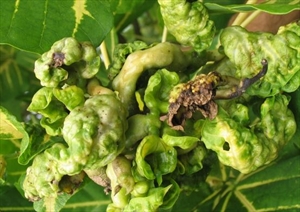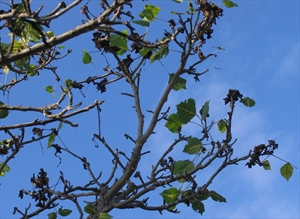AUTHOR Grahame Jackson
Information from Heu RA, et al. (2008) Erythrina erythrinae Kim (Hymenoptera: Eulophidae). New Pest Advisory. No. 05-03. State of Hawaii, Department of Agriculture; and from CABI (2015) Quadrastichus erythrinae (Erythrina gall wasp). Crop Protection Compendium (https://www.cabi.org/cpc/restricted/?target=%2fcpc%2fdatasheet%2f46220); and from Hawaii Invasive Species Council (2019) Invasive species: Erythrina gall wasp (Quadrastichus erythrinae). (https://dlnr.hawaii.gov/hisc/info/biocontrol/latest-biocontrol/erythrina-gall-wasp/). Photos 1&2 Albert (Bud) Mayfield, USDA Forest Service, Bugwood.org. Photo 3 Albert (Bud) Mayfield, USDA Forest Service, Bugwood.org. Photo 4 Richard Markham, ACIAR, Canberra. Photo 5 Erich G. Vallery, USDA Forest Service - SRS-4552, Bugwood.org.
Produced with support from the Australian Centre for International Agricultural Research under project PC/2010/090: Strengthening integrated crop management research in the Pacific Islands in support of sustainable intensification of high-value crop production, implemented by the University of Queensland and the Secretariat of the Pacific Community.








